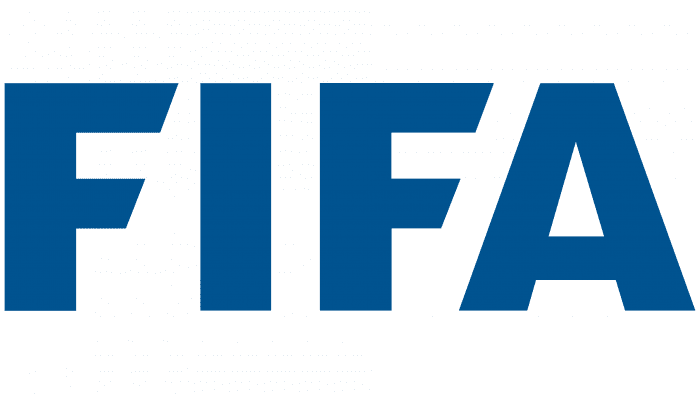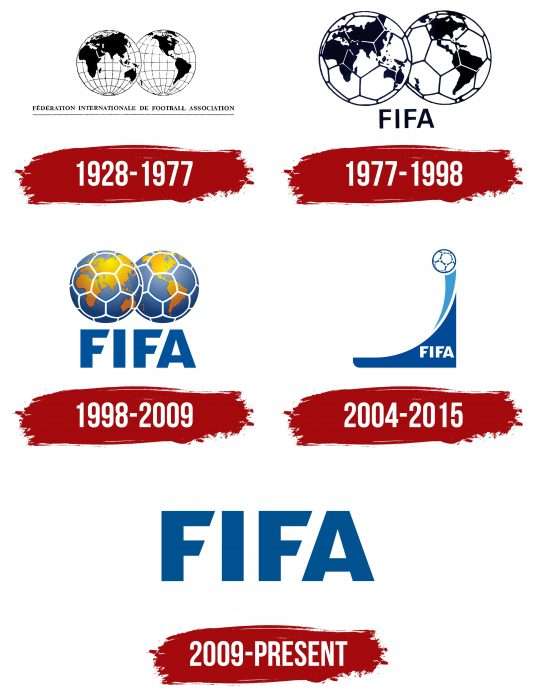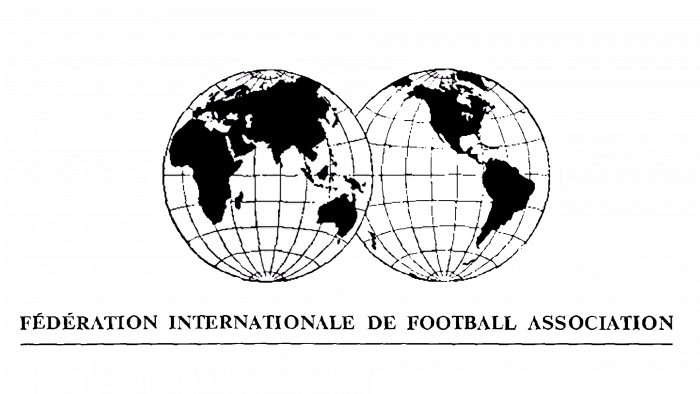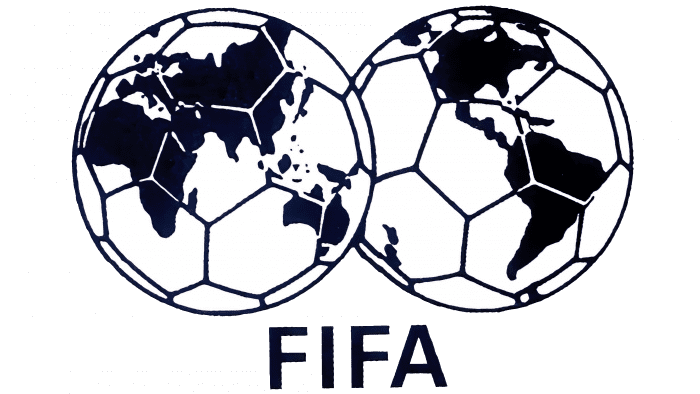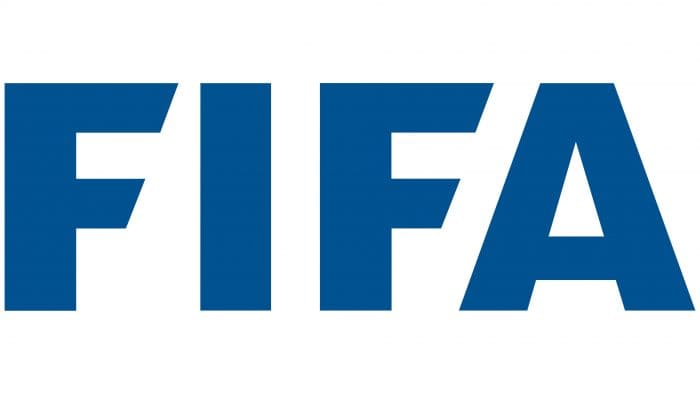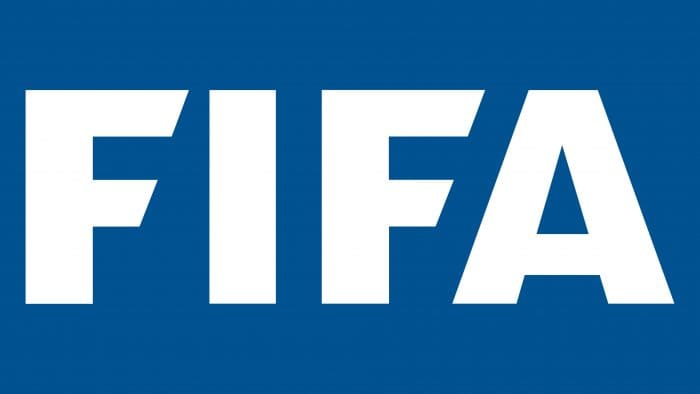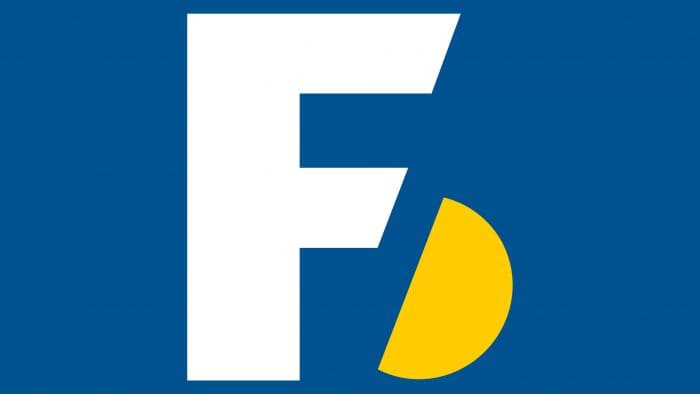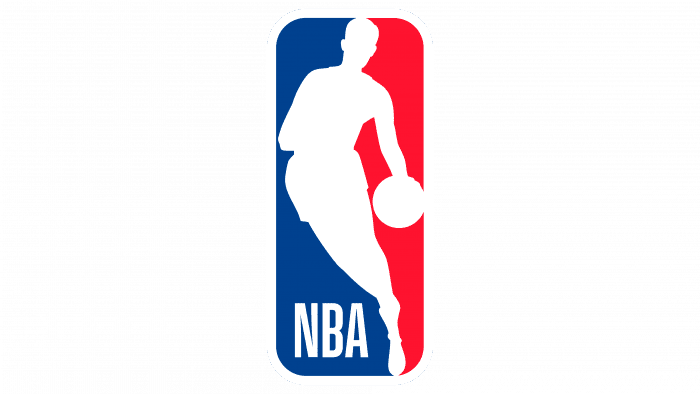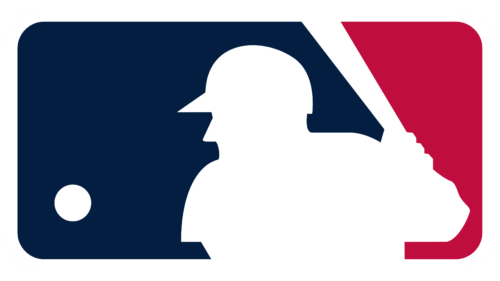The FIFA logo demonstrates the football organization’s dominant position. At the same time, it indicates leadership for the good of spectators and participating teams. The emblem represents professionalism and concern for the quality of the game.
FIFA: Brand overview
FIFA is the supreme governing body for football games and regional clubs. It was founded in 1904 to monitor competitions between teams from several European countries. Thus, the federation founders are France, Denmark, Belgium, Spain, Switzerland, the Netherlands, and Sweden. Today, this list has expanded significantly since the international service includes six confederations, in which representatives of all continents are members. These are South America, Oceania, North and Central America, with the Caribbean, Europe, Asia, and Africa. The head office of the sports association is located in Zurich (Switzerland).
FIFA, the Fédération Internationale de Football Association, has a story that spans over a century, filled with growth, innovation, and some controversy. Established on May 21, 1904, in Paris, FIFA began with representatives from seven European countries: France, Belgium, Denmark, the Netherlands, Spain, Sweden, and Switzerland. Early on, the organization focused on standardizing the game’s rules and facilitating international matches. By 1906, even England, the birthplace of modern football, had joined the fold.
FIFA’s horizons broadened in the 1920s and 1930s as national associations from different continents joined. The inaugural World Cup occurred in Uruguay in 1930, with the host nation claiming victory.
After World War II, FIFA’s expansion accelerated, incorporating associations from Africa, Asia, and North America. Starting in 1954, under Stanley Rous’s presidency, FIFA aimed to globalize football, hosting World Cups in diverse regions and boosting the sport’s worldwide appeal.
The 1970s marked a new era with Brazilian João Havelange at the helm. He transformed FIFA by ramping up commercial activities and expanding the World Cup to include more teams. His tenure saw the introduction of youth and women’s tournaments, further extending football’s reach.
Sepp Blatter’s presidency began in 1998, with continued growth and significant controversy. FIFA’s decision to award the 2018 and 2022 World Cups to Russia and Qatar sparked widespread debate. The organization’s reputation hit in 2015 when a corruption scandal led to the arrest of several high-ranking officials, prompting Blatter’s resignation.
Gianni Infantino assumed the presidency in 2016, focusing on reforms to enhance transparency. The upcoming 2026 World Cup promises to be historic, with the USA, Canada, and Mexico co-hosting an expanded 48-team tournament. Despite controversies, FIFA successfully staged the 2018 and 2022 World Cups in Russia and Qatar.
As of 2023, FIFA oversees 211 national football associations, making it the largest sports organization globally. It orchestrates major international tournaments, enforces the game’s rules, promotes football worldwide, and integrates new technologies into the sport.
FIFA’s journey, marked by triumphs and challenges, underscores its pivotal role in uniting over 200 national associations and fostering football development across all continents.
Meaning and History
FIFA is an acronym for Fédération Internationale de Football Association. The connection with French roots is very important because it appeared in France’s capital and only then acquired world status. Moreover, the original version of the expanded and abbreviated names is used worldwide only in French.
The need to establish a single supervisory body for football associations’ competitions was acute at the beginning of the 20th century. The reason is the huge growth in the popularity of this sport in the international arena. As a result, FIFA was founded at the headquarters of the USFSA (Union des Sociétés Françaises de Sports Athlétiques). Its first president was Robert Guérin, who was replaced in 1906 by the Englishman Daniel Burley Woolfall. For all the years of its existence, the international association has had five emblems.
What is FIFA?
FIFA is an abbreviation formed from the name Fédération Internationale de Football Association. It is an international organization that governs the activities of national football associations. Its tasks include setting standards and organizing major competitions according to the accepted norms. In addition, FIFA is involved in promoting sports and financing the development of football in certain countries.
1928 – 1977
The logo emphasizes the service’s global reach. It features the northern and southern hemispheres of the Earth, depicted with a grid of parallels and meridians. The continents are positioned against this grid, showcasing the organization’s worldwide scope. Beneath the globe, the French inscription “Fédération Internationale de Football Association” appears in capital letters, highlighting the association’s international nature and official status.
The hemispheres and grid pattern reinforce the idea of global presence and interconnectedness, aligning with the organization’s mission to govern football worldwide. Including both hemispheres signifies inclusivity and extensive influence across all continents.
The French inscription at the bottom adds formality and tradition, acknowledging the organization’s roots. The capital letters enhance readability and convey authority and prestige.
1977 – 1998
1977 FIFA redesigned its emblem to emphasize its international status and football’s global nature. The new design replaced traditional parallels and meridians with a honeycomb grid pattern typical of a soccer ball’s surface. This change merged the imagery of the world with the sport, making the connection between FIFA’s global reach and football clear.
By turning the hemispheres into soccer balls, the emblem maintained the idea of worldwide presence while highlighting football’s universal appeal. The hexagonal grid pattern symbolized unity, teamwork, and the sport’s global popularity. This redesign celebrated both FIFA’s international role and the essence of football, creating a cohesive and visually appealing emblem that strongly represents FIFA’s mission and identity.
1998 – 2009
During this period, FIFA introduced a color version of its logo, marking a significant change. The continents were painted yellow, symbolizing energy and optimism, while the oceans were colored blue, representing trust and stability. A white hexagonal grid with medium-thickness stripes maintained the classic soccer ball design, ensuring that the continents and oceans stood out.
This new color scheme enhanced the logo’s visual appeal and made it more recognizable. The connected hemispheres symbolized FIFA’s unity and global reach, highlighting its role in bringing together diverse nations through football.
Introducing color to FIFA’s logo added vibrancy and clarity, making it a more powerful symbol. The yellow continents and blue oceans, framed by the white hexagonal grid, created a striking visual effect that reinforced FIFA’s identity and mission, emphasizing international unity and the dynamic nature of football.
2004 – 2015
During FIFA’s 100th anniversary, a special emblem was used alongside the main logo. This emblem featured a soccer ball on a wave, symbolizing football’s dynamic nature. The design had a high blue base and a sweeping blue stroke, giving an impression of movement and energy.
At the center of the emblem was a white soccer ball with blue lines, representing the essence of the sport. The ball appeared to ride the wave, adding excitement and forward momentum. This imagery conveyed football as a powerful, unifying force that continues to grow.
The name of the sports association was displayed at the bottom, grounding the design and linking it to FIFA. The blue elements symbolized trust and stability, while the white ball with blue lines stood out against the background, drawing attention to the sport.
2009 – today
The current logo consists only of text, specifically the names of international organizations. The design is memorable due to the distinct individuality of the letters. Following established guidelines, the abbreviation is presented in French without additional explanations or decoding. Every character in the logo is uppercase and colored in bold blue.
The standout feature of this logo is the unique design of the letter “F.” Both of its protrusions are cut off at an angle, creating a distinctive shape that enhances the logo’s recognizability. This unusual modification of the “F” adds a touch of modernity and style to the overall appearance.
The use of blue for all the characters conveys a sense of professionalism, trust, and authority, aligning with the values and image of the international organizations represented. The uppercase format of the text reinforces the importance and stature of these entities, making the logo both authoritative and easy to read.
FIFA: Interesting Facts
FIFA is the organization that oversees international soccer, playing a big role in the sport’s global presence.
- Starting: FIFA was created in Paris on May 21, 1904, by teams from seven countries. Its main job was to manage international soccer competitions.
- World Cup Beginnings: The first World Cup was held in 1930 in Uruguay. It has since become the biggest soccer event every four years, watched and loved by people everywhere.
- Global Membership: FIFA has more members than the United Nations, with 211 associations, showing soccer’s worldwide popularity and power to unite people.
- Women’s World Cup: Starting in 1991 in China, the Women’s World Cup has helped make women’s soccer more popular and respected than men’s.
- Rankings: FIFA ranks men’s and women’s national teams to see how they stack up against each other, which helps organize tournaments and is fun for fans.
- Awards: Until 2016, FIFA awarded the Ballon d’Or to the top male and female players. Now, France Football gives the Ballon d’Or, and FIFA has its awards.
- Helping the Sport Grow: FIFA runs programs to help young people play soccer, train better coaches, and build soccer fields in places that need them.
- eWorld Cup: FIFA also has a tournament for the best players of the FIFA video game, mixing traditional soccer with gaming and attracting new fans.
- Doing Good: FIFA also works on social projects, such as fighting racism in soccer, promoting health, and teaming up with the UN on big issues.
- Cultural Influence: The FIFA World Cup is more than a sports event; it’s a time when people worldwide come together to enjoy soccer, showing the game’s power to connect different cultures.
FIFA has helped make soccer the most loved sport worldwide, influencing how the game is played and watched and bringing people together.
Font and Colors
The hallmark of an international football organization almost always consisted of two connected hemispheres. At first, they were in the form of a map of the world and then in the form of balls. The current version, in which the inscription is predominant, stands separately. It was taken from the logo marking FIFA’s 100th anniversary.
The logo used a chopped typeface, smooth, grotesque, close to the Arazati Negra Expandida Regular font. After the 1998 redesign, the letters are much wider, bolder, and oblique cuts on the “F” tabs. This version resembles a converted version of Vaccine Sans Black.
In terms of color scheme, the association prefers uniformity or minimal colors. Therefore, at different times, logos were dominated by black, blue, blue, and yellow.
